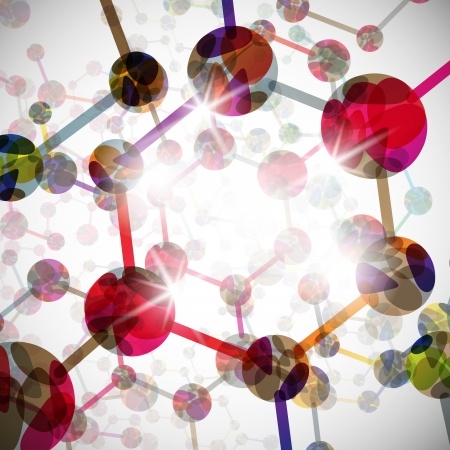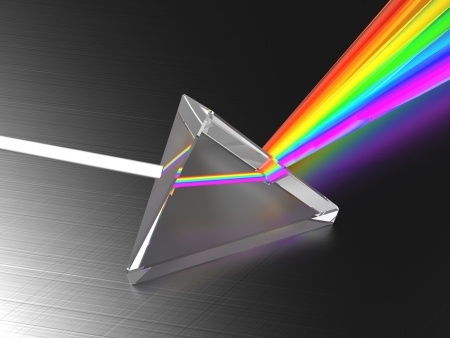Germs in blood products, Philae calls home from its comet, lab limbs, molecules – ultra-chilled and why pool water turns hair green. What else could you possibly want to know. These cool facts and more in this issue of SciNews.
SciNews is published every Monday and Thursday. Stay tuned for more.
 Biology
Biology
A germ stopper for blood products. Science News for Students
A new treatment can inactivate germs in some of the blood products that are donated for use in transfusions. The U.S. Food and Drug Administration approved the use of this new treatment last December. Blood banks in Puerto Rico began using it right away. (A serious disease outbreak had rattled the island. And the virus responsible did not show up during blood screening.) This month, blood banks on the U.S. mainland will begin start to use the new treatment as well. Read more…
Scientists Regrow an Entire Rat Limb in the Lab. Discover
Prosthetic limb technology has certainly advanced over the years, but replacing lost limbs with fleshy, biologically functional limbs remains the ultimate prize. And scientists just got a step closer to that goal. Read more…
Explainer: What is a virus? Science News for Students
Viruses cause these diseases — and many more. Some are serious. Others, not so much. For better or worse, viruses are part of life.
It surprises many people to learn that viruses “live” in us but aren’t technically alive. Viruses can replicate only inside the cells of their host. A host can be an animal, plant, bacterium or fungus. Read more…
Chemistry

Gulf oil spill: Still poisoning dolphins to crickets. Science News for Students
Scientists have just linked a massive, ongoing die-off of dolphins in the Gulf of Mexico with the April 2010 Deepwater Horizon oil spill. But that’s not the only fallout from this spill, one of the biggest in U.S. history. Oozing oil is a recurring yet hard-to-control problem on marshes in a bay just south of New Orleans. One day, a patch of the wetland is green and lush. The next it’s drenched in thick, noxious goo. Read more…
Ultracold molecules created. Science Daily
At near absolute zero, molecules may start to exhibit exotic states of matter. Experimental physicists have successfully cooled molecules in a gas of sodium potassium to a temperature of 500 nanokelvins — just a hair above absolute zero, and over a million times colder than interstellar space. The researchers found that the ultracold molecules were relatively long-lived and stable, resisting reactive collisions with other molecules. The molecules also exhibited very strong dipole moments — strong imbalances in electric charge within molecules that mediate magnet-like forces between molecules over large distances. Read more…
Why Does the Pool Turn Blonde Hair Green? About Chemistry
Question: Why Does the Pool Turn Blonde Hair Green?
Answer: It isn’t the chlorine that turns blonde hair green. Oxidized metals in the water bind to the protein in the hair shaft and deposit their color. The metal that produces the green tint is copper, which is most commonly found in algicides, though it naturally occurs in some water. The bleach that is added to a pool may be responsible for oxidizing the metal, but it’s not the cause of the color. Read more…
Physics
Some of sun’s magnetic fields may act more like forests. Science News
Treelike magnetic fields, deeply rooted within the sun and stretching far into its atmosphere, might explain why the solar corona is millions of degrees hotter than the sun’s surface. This swaying forest of magnetic mangroves can carry energy up into the corona thanks to a foaming sea of stronger magnetism close to the surface, researchers report in the June 11 Nature. Read more…
Earth and Space Science
Rendezvous with Pluto. Science News
Tiny, far-flung Pluto is about to have a visitor — at least for a few hours.
On July 14, NASA’s New Horizons spacecraft will reach the dwarf planet and try to learn all it can about Pluto and its five known moons. Then the probe will leave Pluto behind, vanishing into the frigid darkness beyond the planets. Read more…
Solar Sailing Spacecraft Unfurls Its Sails, Finally. Discover
It hasn’t been entirely smooth sailing for LightSail, but on Sunday its tribulations came to a happy conclusion.
Since its launch on May 20, technical glitches prevented the LightSail satellite from accomplishing its one and only task: unfurling four massive Mylar sails that, theoretically, could harness energy from the sun to propel the spacecraft through space. The satellite is a prototype, meant to serve as a proof of concept for this design of spacecraft. Read more…
Comet lander Philae awakes from hibernation, calls home. Globe and Mail
The comet lander Philae has awoken from a seven-month hibernation and managed to communicate with Earth for more than a minute, the European Space Agency said Sunday.
The probe became the first spacecraft to land on a comet when it touched down on the icy surface of 67P/Churyumov-Gerasimenko in November. After its historic landing, Philae managed to conduct experiments and send data to Earth for about 60 hours before its batteries were depleted and it was forced to shut down its systems. Read more…



